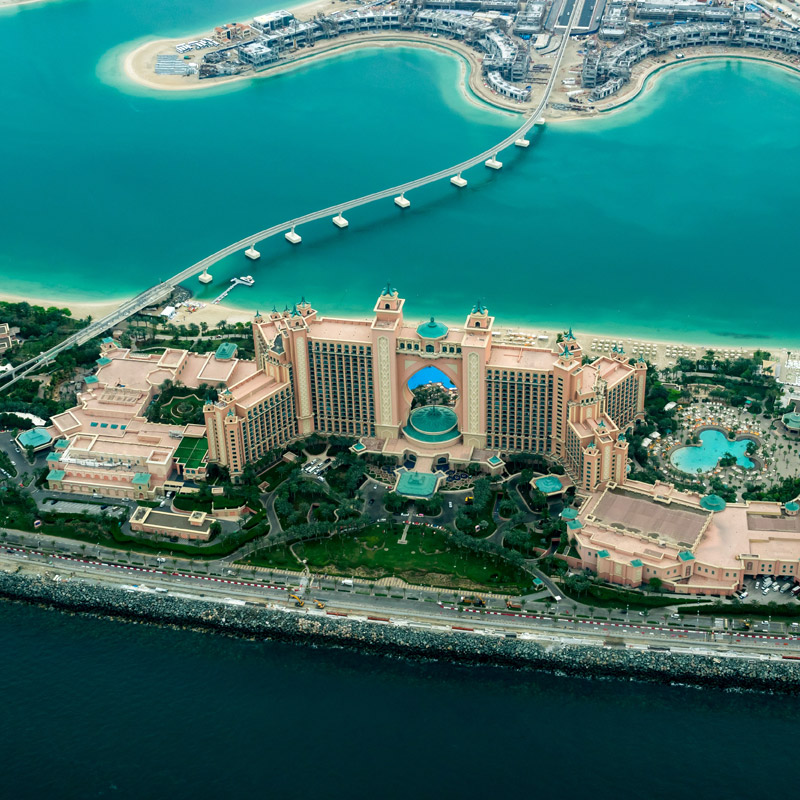Alex Sogno, CEO, Global Asset Solutions, calls on hoteliers to create their own demand generator to fill rooms during the low seasons and stop blaming a lack of pull factors.
Creating your own demand allows you to take back control of your business and limit your reliance on external factors, which can vary your rates and occupancy.
Using a loyalty program, building your social media presence, or creating direct marketing campaigns allows you to reach potential guests and incentivize them to book direct with the hotel. This not only reduces the commissions paid to online travel agencies but also allows hoteliers to build a direct relationship with their guests, providing them with a personalized experience and fostering brand loyalty. Yet, marketing teams need to shift their mindset when it comes to the low season. They are not there just to capture existing demand, but to create the right mix between local partners to generate potential new demand. They shouldn’t rely on public agencies, hoteliers need to take the matter into their own hands.
Destination marketing is a familiar concept to popular locations, which have become adept at selling themselves around the world. In the past few years, we have seen countries such as Portugal excel in attracting both visitors and investment by creating a plan which brings government and businesses together to combine the policies and infrastructure needed to thrive.
Hotels need to adopt this mindset and think of themselves as destinations. Then they need to go one step further and become destinations. This is particularly relevant in seasonal destinations. Only by doing this, they can maintain a steady stream of guests at a rate premium, which maximizes the hotel’s value.
It is easy to see how hotels have been tempted into what the uncharitable might call laziness. The advent of the OTAs turned on the taps to effort-free guests – at a cost. Other paid-for options include joining brands or marketing consortia, which come with additional benefits and additional costs. What many hotels had forgotten was how to look beyond their terminals and into the world around them for opportunities, back the pre-OTA way. And yes, it wasn’t always the easiest, but if you put in the time, it delivered a RevPar edge above the average you are ticking along with.
But how can the hotels become a destination and attract clients both in high and low season? They need to offer to their clientele something special, something different which can attract them to come and spend their money at the property. One of the ways to do so and on which I would like to expand today are the special events. Meeting conferences and events are main driving forces of destinations. They can move many clients and we see that every day in our business. The marketing department is the cornerstone in this plan.
If you find yourself looking enviously at the rates and occupancy delivered during the fashion weeks in Paris, don’t wait around for the local tourism agency to create such event, build one yourself. If you do it right, it will become an institution of its own. Fashion week is only one example. Look at the Cannes Festival, or the Mobile World Congress in Barcelona. Such events will fill up your hotels during the low season, but hoteliers need to drive them.
 Here are some steps that hotels can take to create a successful event:
Here are some steps that hotels can take to create a successful event:
- Identify the target audience: Hotels should identify the audience for the event and tailor the event to their needs and preferences. For example, Cannes Festival is a good fit with the luxury hotels in the market.
- Plan the event: Hotels, together with industry partners, should plan the first event in detail, including the date during the low season, location (on-site or off-site), and activities. They should also consider partnering with local businesses and organizations to enhance the event and attract more attendees. The idea here is to initiate the event but don’t necessarily own the event in the future.
- Promote the event: Hotels can team up with event marketing agencies and support the event the first years by promoting it through a variety of channels, including social media, email marketing, and advertising. They can also leverage their existing customer base by offering special promotions or discounts to guests who book a room during the event.
- Provide accommodation: Hotels should ensure they have enough rooms available for the event and consider offering package deals that include accommodation and event tickets. Here again, it is important to select dates during the low season.
Potential events can include film or music festivals, art fairs, literary festivals, Christmas markets, stand-up comedy festivals, wedding expos, antique fairs, culinary tours, fashion weeks, sport event, health and fitness expos. We have seen successful examples of these in Hay, in the UK (book festival), in Montréal (Just For Laughs comedy festival) and the Venice Biennale. We all know markets that are successful with these events. The first year may be challenging financially and with the overall organization, but soon the event will stand on its own. Once you have created this event, you can tailor your marketing to the specific needs and preferences of the target audience and help build loyalty and repeat business. This will provide you with valuable data on your guests, including their booking habits, preferences, and behaviours. This data can be used for future marketing efforts and improve the overall guest experience, which can ultimately lead to higher occupancy rates, increased revenue, and greater profitability for the hotel.
One method to support the creation of a destination, that does not predate the OTAs, is by utilising influencers. While hotels on, say, the French Riviera have been able to hail a heritage of guests from royalty to film stars, social media has meant that there are more options to bring your property to the attention of millions. Then with the right event or package, you can create the need to your target market to visit your property during the low season.
There are many content creators to choose from, who will do everything from post photos and videos from your property to writing posts and even helping you create networks with other influencers. Unlike hosting a Hollywood actor, you are able to pick from a broad range of influencers who fit your brand. You could be trying to sell your hotel to independent travellers, active travellers, luxury guests. The internet has bought us choice in all things: there’s an influencer out there for everybody.
The most important thing when creating your destination is to remember that the age of the generic brand is over. While many guests still want the reassurance of a brand – and owners the reassurance of at least a basic level of occupancy – they want something layered on top. Guests want an exceptional and memorable stay. Owners want exceptional rates. And memorable value when it comes to an eventual sale.
Perfecting that stay means working with your team to ensure that service is in place, but also adding the pull factors to attract that initial attention. Cookie-cutter hotels are over. Work out what makes your hotel a destination apart.
Post
Portugal Hotel Market Outlook 2024
PORTUGAL’S HOSPITALITY INDUSTRY is experiencing an impressive comeback post…
Post
Know thyself for budget success
“Before you can budget for the year ahead, it is critical that you assess the…
Post
Should hotels refuse to join a club which would have them?
The current battleground for the big hotel chains is not pipelines, but loyalty…
Post
The digital concierge: how can hotels use technology to maximise revenue and customer experience?
More than half of all business trips are now a mix business and leisure – so…
Post
Spanish Hotel Market 2024
SPAIN’S TOURISM SECTOR in 2023 exceeded all initial expectations and surpassed…
Post
Balancing the scale of luxury
Tell someone in the sector your hot new tip is luxury growth and you’ll lose…
Post
The luxury sustainability conundrum
Climate change is one of the most significant challenges society is facing, but…
Post
Failing the AI tech race
Attend any conference over the past decade, and a common theme is the devilish…
Post
From compound stays to compound interest
Back in the days of yore - or, for those who measure time this way -…
Post
Projecting into an AI future
The world of hospitality has seen remarkable changes over the past few decades,…
Post
Bringing strength to soft brands
‘Another day, another brand’ could well be the catchphrase of our sector, but…
Post
The need for CAPEX and creating returns
As an asset manager, it’s my job to create and manage the relationship between…
Post
Budgeting for change pt.2
In the second of our series on the budget approval process, we are looking at…
Post
Budgeting for change pt.1
Each season brings with it change and, depending on the time of year, the…

